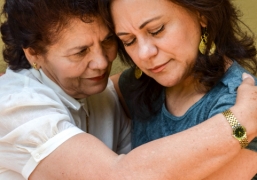Dear all,
I hope you have had a good two weeks of PD. I know that you have been working hard and need the day off on Monday to relax and re charge your batteries. Hence, I thought this would be the ideal moment to share a few articles and videos that relate to the social and emotional aspects of our mission and values. I am sure there will be something of interest for each of you.
At the Primary PD on Saturday morning Lana talked about how welcoming ISHCMC was to her and how much growth she had noted in a year. Both are pillars of our Achievement Culture. Across the school this year there is a real warmth that is being noted by our stakeholders and visitors. Here is a small extract from an email that was received by secondary administration last week that sums up this feeling you are creating:
"I would like to share with you the overwhelming welcoming
feeling I received from the secondary students at ISHCMC, the first weeks at
your school.
Even though I only share the same halls as them in the
afternoon - every day I’m been met with smiles and greetings. In all my years
teaching ........ at BIS I never experienced anything like this. These children
and the warm environment at your school are truly something special.
The same goes for secondary department teaching staff,
especially you and the two Korean teachers I share my room with. All of you
have gone out of your way to make me feel welcome. Beside my lovely and
hardworking students, it’s things like this, that makes it a joy coming to work."
This first video explores the skills needed for the 21st century through a wonderful problem solving story of an artist, Mary Beth, and her work with Ebola patients. Her story demonstrates the skills; curiosity, creativity, initiative, multi-disciplinary thinking and empathy that support what we are doing with our students. The message of this video is important because it emphasizes the time is here to move from our knowledge/ information based economy to a human economy. This was again a theme that emerged during the 3 E's conference at the weekend.
The Adaptable Mind from The Moxie Institute on Vimeo.
Jason Lewis: Resilient World Explorer
In 2007 you broke all sorts of records, completing the first circumnavigation of the globe using “human power”—no engines, not even sails. It took 13 years, but you covered over 46,000 miles walking, biking, kayaking, rollerblading—even peddle-boating across the Atlantic and Pacific Oceans! What motivated you to undertake such a journey? When I started out I had a burning question that I wanted to answer, which was how to understand the world: How do I live my life both to be a better person and to ensure that we don’t trash the planet? I was trying to strip away the layers of who I thought I was, as someone brought up in England. That was my overarching mission, and it was the only thing that kept me going over the 13 years. If I hadn’t had that underlying reason, I probably would have given up partway through.http://www.tricycle.com/buddhist-life/interview-jason-lewis
Three Strategies for Bringing More Kindness into Your Life
One of the best ways to increase our own happiness is to do things that make other people happy. In countless studies, kindness and generosity have been linked to greater life satisfaction, strongerrelationships, and better mental and physical health—generous people even live longer.

What’s more, the happiness people derive from giving to others creates a positive feedback loop: The positive feelings inspire further generosity—which, in turn, fuels greater happiness. And research suggests that kindness is truly contagious: Those who witness and benefit from others’ acts of kindness are more likely to be kind themselves; a single act of kindness spreads through social networks by three degrees of separation, from person to person to person to person.
But just because we have the capacity for kindness, and reap real benefits from it, doesn’t mean that we always act with kindness. We may be too busy, distracted, or wrapped up in our own concerns to pay close attention to others’ needs or actively seek out opportunities to help. Or we’re just out of practice: Researchers have argued that kindness is like a muscle that needs to be strengthened through repeated use.
How do we strengthen kindness? Researchers have identified a number of effective exercises, and many of them are collected on the Greater Good Science Center’s new website, Greater Good in Action (GGIA), which features the top research-based activities for fostering happiness, kindness, connection, and resilience.
Here I highlight GGIA’s 10 core kindness practices, grouped into three broad categories.
Here's what brain
research says will make you happy:
- Ask
"What am I grateful for?" No
answers? Doesn't matter. Just searching helps.
- Label
those negative emotions. Give it a name and your brain
isn't so bothered by it.
- Decide.
Go for "good enough" instead of "best decision ever
made on Earth."
- Hugs, hugs, hugs. Don't text -- touch.
To end with a music video by two people I wouldn't usually listen to but the sentiment is one that we all need to have in our lives......real friends
In case you haven't registered yet here is the link to the Mindfulness Summit that is taking place throughout October. I have just uploaded all the event to my calendar.
Have a relaxing weekend,
Yours
Adrian




